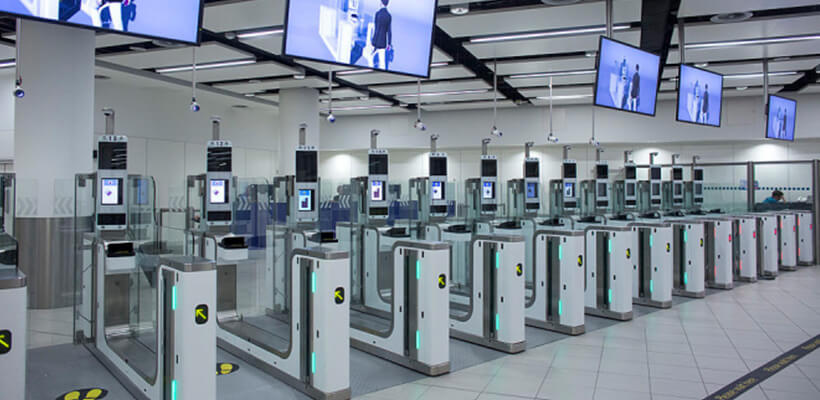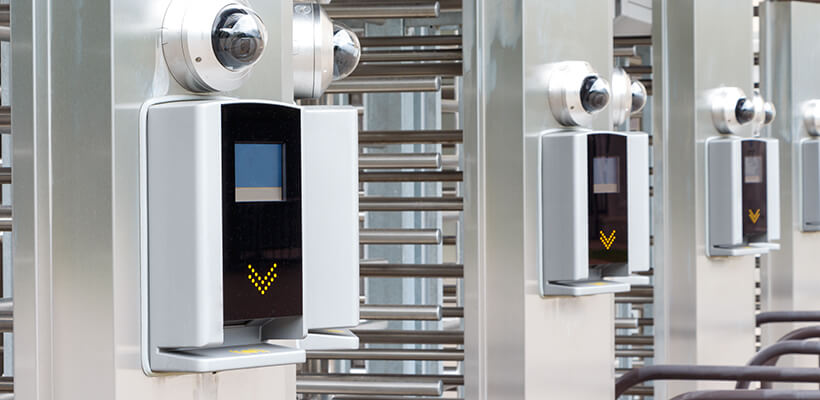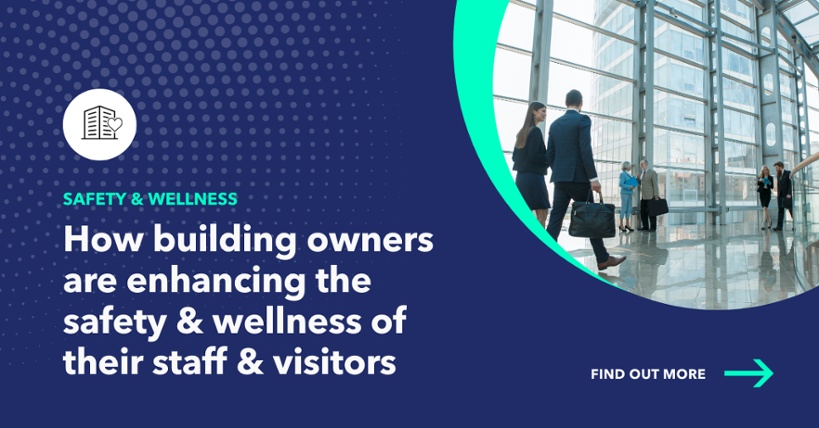Protecting workers and visitors from Covid-19 is a number one priority for many businesses right now. Having a visible solution in place to ensure Covid safety is proving a key factor in convincing people to return to work.
Thermal imaging cameras have become part of many companies’ strategies for Covid security, but do they actually work?
Businesses now have a number of options for screening the temperatures of those entering and moving around their buildings. From the beginning of the Covid outbreak these strategies have been evolving and improving.
In the beginning
At the start of the Covid pandemic many businesses invested in handheld ‘thermometer guns’ to rapidly implement Covid safety measures. Security guards and reception staff were tasked with manually testing workers and visitors as they entered buildings. Temperatures were read and people with elevated readings were sent away.
However, with such a manual approach there was always the risk of errors and even new infections arising from the interaction itself. Indeed, recent media reports have suggested that security guards were among the workers most heavily affected by Covid as a result of such early exposure. It seems the tools and the training at this early stage of the pandemic were not always fit for purpose.
“Thermometer guns are used only for quick screening and are not as accurate as traditional thermometers… It was a small industry, and if it weren’t for the outbreak, it would not now be in the spotlight.”
New York Times, 14th Feb 2020
Thermal imaging cameras deployed for temperature screening
Soon, thermal imaging cameras - once primarily used for intruder monitoring - were being deployed for safer and more systematic temperature screening.
These cameras could be used more effectively for automating checks and screening larger numbers of people more quickly. Now they are a common sight in many offices and used in increasingly sophisticated ways.
How do thermal imaging cameras work?
Every object with a temperature above absolute zero gives out a certain amount of Infra-Red (IR) radiation. The higher the temperature of the object, the more intense its infra-red emissions.
Thermal imaging cameras turn these invisible IR readings into ‘heat zone’ images that can be viewed on a screen. These images are scanned automatically and readings shown in on-screen messaging and other alerts.
The accuracy of these cameras is typically +/- 0.5°C, however, this can be enhanced with a blackbody calibrator to achieve results within a range of +/- 0.3°C.
It should also be noted that more sophisticated AI technology is now helping systems measure body temperatures in more crowded conditions by filtering out background thermal ‘noise’.
Thermal imaging cameras integrated with the right software systems can:
- Indicate if a detected temperature falls outside of a pre-configured range
- Screen a high volume of people in a very short timeframe
- Provide audit trails of steps taken to assist with health, safety and welfare compliance
Thermal cameras integrated for smarter occupancy management and access control
Thermal cameras with mask detection capabilities are being used to screen groups of people as they pass into offices and workspaces.
Security monitors can detect those individuals without masks or who have raised temperatures - and notify guards by message or alarm to intervene. Biometric technology is also being incorporated through border controls.

These systems become more sophisticated when they are connected to access control systems. In these cases those passing through camera checkpoints can be locked out and prevented from entering a building if their temperature is too high, or they are without a mask.

Cameras which support facial recognition and are fully integrated with access control systems can use biometric credentials to recognise staff members and take their temperature. They can then give them (or deny them) access to a building while reporting their case to managers. Further messages can be sent by email, SMS or in-app notifications to affected workers informing them what they should do next. Similar technology is being incorporated across ports, airports and sports stadia for example.
But do they work?
Both the FDA in the US and the MHRA in the UK have been quick to point out thermal imaging cameras are not reliable indicators of Covid-19. What's more, the WHO (World Health Organisation) has stated that on its own temperature screening may not be very effective".
Just because someone has an elevated temperature does not mean they have coronavirus, and some people with Covid may not have this symptom at all.
The MHRA (the UK regulator) has warned against industrial thermal camera tech being repurposed for use with humans without effective testing and reworking of the tech. Some have fallen foul of the regulators for presenting these systems as medical devices, when they are not.
Temperature screening works as part of an integrated strategy
That said, there has been vocal support in the medical community for these solutions as an effective first line of defence to make workplaces more Covid secure.
For example, the CVMC hospital group in America has stated that this kind of screening:
‘greatly decreases the time it takes for visitors to enter, eliminates the need to remove their masks, and decreases the time they spend in close proximity to our staff, which keeps everyone safer,”
Robert Patterson, Vice President CVMC, Vermont
Meanwhile many large scale manufacturing and retail businesses (permitted to keep sites working throughout the epidemic) have embraced temperature screening as a solution to protect their staff and keep them operational. Ford, Tesla, Amazon and Walmart have all been screening workers’ temperatures, making automated checks part of their daily routines, and enabling successful track and trace procedures.
Now there is a body of evidence and experience to draw on to ensure that you choose and implement screening systems that are reliable and can achieve your required aims.
But ensuring that screening is carried out effectively also requires that you work closely with installation experts, who can advise on the correct siting and calibration of your chosen solution.
According to the FDA installation considerations could include:
- Ensuring ambient temperature are within required range where cameras are used
- Avoiding reflective backgrounds to minimise infrared radiation
- Ensuring subjects are captured away from heat sources, direct sunlight and drafts
- Avoiding strong lighting condition (such as incandescent or halogen lighting)
However, every system will have different settings and requirements, which you should understand before you commit to installing them.
Privacy and protection
But for screening tech to be a success you need to develop implementation policies and train workers to police your systems safely, effectively and within the law. If you are capturing and storing images of individual faces there are obviously privacy implications and legal complexities involved.
You should consider:
- Completion of consent forms for staff
- A policy for screening visitors
- Who will monitor the screening? What special training will they need?
- Will flagged visitors be asked to leave or to undergo further clinical screening?
- Will a specific facility be required for this further screening or for personnel feeling unwell?
Temperature screening has been a useful addition to many businesses' approach to Covid safety. It has given reassurance to workers that businesses are taking the threat of the pandemic seriously.
Used in conjunction with effective sanitisation and social distancing policies they can work as part of an overall compliance strategy.
Future proof your business
It’s a fact that scientists are predicting pandemic events will become increasingly common in the future. So, it’s likely that businesses will need the flexibility to quickly ramp up these kinds of controls in the event of similar emergencies.
Rising to this future challenge will require virus protection training, technology and procedures to seamlessly kick in as and when required across a business. If thermal imaging and temperature screening capabilities are already built into your access control and occupancy management systems, then this will be easier to achieve.
In the short term, intuitive, integrated and intelligent temperature screening systems will help us get back to work with the minimum of delay and disruption. In the long term, they could help insulate us against the commercial shock of future pandemics.





 Previous Blog
Previous Blog

Comments.